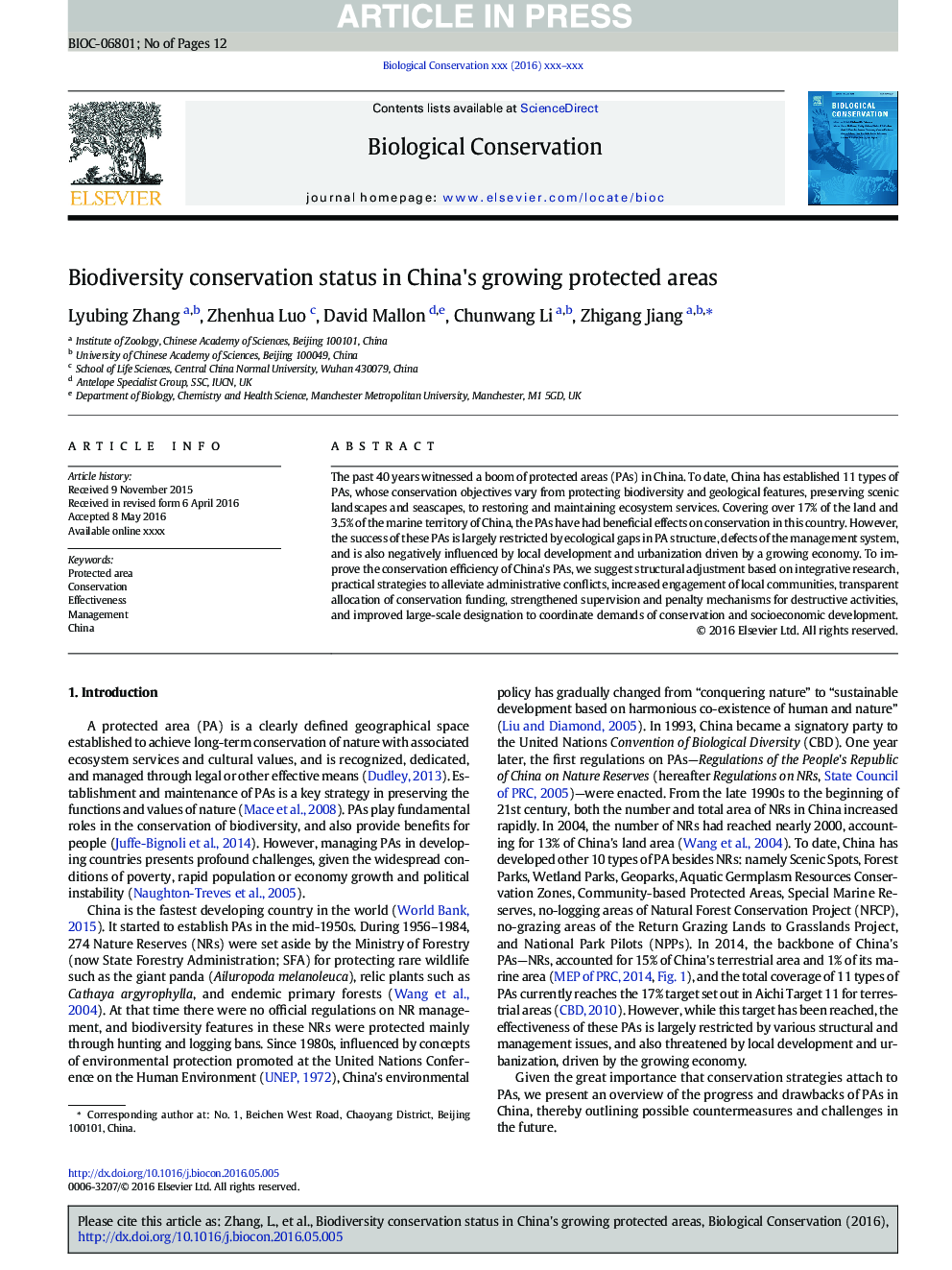| Article ID | Journal | Published Year | Pages | File Type |
|---|---|---|---|---|
| 5743165 | Biological Conservation | 2017 | 12 Pages |
Abstract
The past 40Â years witnessed a boom of protected areas (PAs) in China. To date, China has established 11 types of PAs, whose conservation objectives vary from protecting biodiversity and geological features, preserving scenic landscapes and seascapes, to restoring and maintaining ecosystem services. Covering over 17% of the land and 3.5% of the marine territory of China, the PAs have had beneficial effects on conservation in this country. However, the success of these PAs is largely restricted by ecological gaps in PA structure, defects of the management system, and is also negatively influenced by local development and urbanization driven by a growing economy. To improve the conservation efficiency of China's PAs, we suggest structural adjustment based on integrative research, practical strategies to alleviate administrative conflicts, increased engagement of local communities, transparent allocation of conservation funding, strengthened supervision and penalty mechanisms for destructive activities, and improved large-scale designation to coordinate demands of conservation and socioeconomic development.
Related Topics
Life Sciences
Agricultural and Biological Sciences
Ecology, Evolution, Behavior and Systematics
Authors
Lyubing Zhang, Zhenhua Luo, David Mallon, Chunwang Li, Zhigang Jiang,
